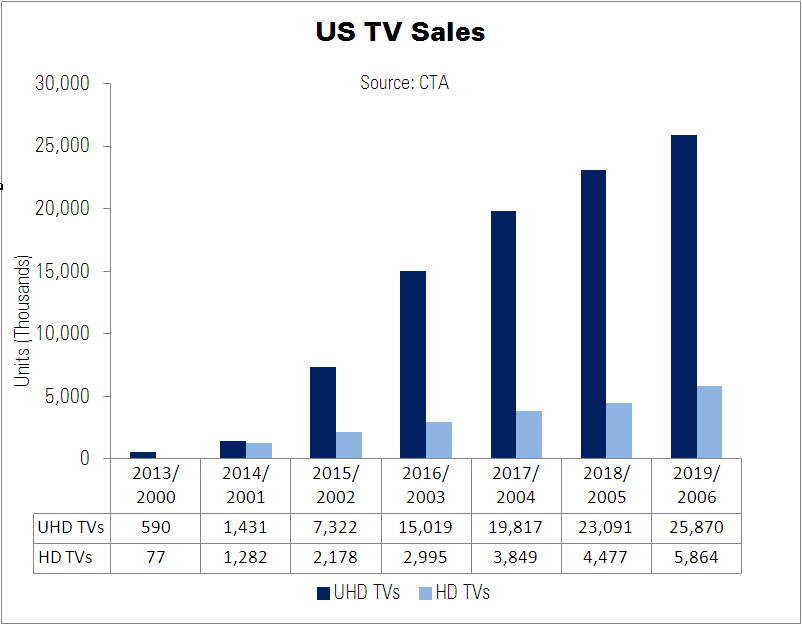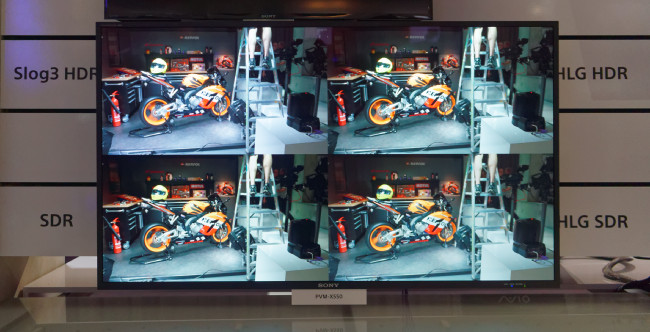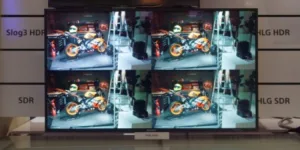Over the last couple of years, I have checked out almost all of the companies at IBC that were talking about UltraHD. This year, that simply wouldn’t have been possible as everybody was talking about UltraHD, as far as I could tell. It’s amazing how quickly UltraHD has been accepted and adopted.

Now part of the reason for this is that set makers, prompted by the panel makers, have driven the adoption of UltraHD very hard. Back in 2014, after going through the intense immersion of IFA and IBC (for US readers, imagine CES running straight into NAB!), I was thinking about what would drive the push for ‘better pixels’ and ‘faster pixels’ as well as ‘more pixels’. Better pixels really meant high dynamic range (HDR) and wide colour gamut (WCG), while faster pixels meant high frame rates (HFR). I came to the conclusion that each would be implemented because there was a segment of the industry that really cared about each.
More Pixels
It seemed to me that spatial resolution would be driven by the panel makers, as they could do it (relatively) easily. That certainly seems to have happened. At a recent event in the US, Gary Shapiro of the CTA presented this data on the relative speed of adoption of HD and UltraHD.

Better Pixels
I thought that Hollywood would drive “better pixels”. I had heard that a lot of Hollywood content is archived at just 1080P resolution, with 24 frames per second, so there was not much scope for improving the frame rate or resolution, but you could re-grade the content to support HDR. Much, or most, of the content was in the DCI P3 colour gamut which is close to the gamut of film. Re-grading that content for HDR would allow the studios to re-sell much of their content on new formats such as UltraHD Blu-ray, and there’s not much that they like more than selling the same content again.
If you’ve seen a good demonstration of HDR, you immediately understand the value and importance of HDR and, of course, at IFA and IBC there was much discussion of who was doing what. However, at IBC in particular, as the DVB pointed out during its press event, there are decisions being taken over coming weeks that will decide how it will be implemented in European broadcasting. That’s a key step in developing the HDR ecosystem. BT.2100, which standardises the use of the ‘PQ’ curve and HLG for content creation, has helped to clarify how things will develop, but DVB has to decide how to implement HDR in the broadcast infrastructure in Europe.
At IBC, there were a number of practical solutions to solve the problems caused by the many, many different combinations of displays and content that will be available. Sony showed an UltraHD monitor that can display images with different EOTFs in each quadrant. Technicolor was talking about and showing its technology to allow HDR to be encoded into SDR streams, with metadata, to allow compatibility with legacy sets, but allowing HDR sets to get the content they need.
 At IBC, Sony showed the PVM X550 which can support different EOTFs in each quadrant. Image:Meko
At IBC, Sony showed the PVM X550 which can support different EOTFs in each quadrant. Image:Meko
(By the way, one of the most interesting comments I heard was from a very experienced broadcast technologist was that “Although the company demos can show differences between all the HDR approaches, the reality is that no consumer is going to see much difference”.)
Faster Pixels
As for HFR, I thought in 2014 that this development would be pushed hard by pay TV broadcasters mainly because of the improvement that HFR could make in sports, which is the critical driver for Pay TV. I was slightly surprised, then, when the really dramatic impact in HFR was made by a movie maker, Ang Lee, as I wrote about in my Display Daily a couple of weeks ago. (Ang Lee Shows the Future of Cinema Display (Updated))
However one of the demonstrations that impressed me most at both IFA and IBC was the collaboration between the EBU and LG that showed sports broadcasting in 100Hz. Although it was suggested at IFA that this was in UltraHD resolution, at IBC it was made clear that actually the content was in 1440p resolution as the processors in the OLED set don’t yet have the bandwidth to work properly at 2160p in 100Hz.
Regardless, the motion was excellent and there was a real difference, to me, in the quality. I had the chance for an extended watch of some UltraHD soccer on the SES booth (it drew a crowd on the Saturday afternoon by showing the Manchester United vs City Premier League match live!) and it seemed to me that there were still some quality issues to be resolved. (I suspect that this might also be related to how the content was captured as there is still a lot to be learned about HFR capture, as Ang Lee highlighted). However, the EBU/LG demo looked really good with much more detail visible in moving objects
Now, there has been a lot of talk about needing much more bandwidth for HFR, but the changes between the frames get smaller when going from 50/60Hz to 100/120Hz, so there is nothing like a doubling of data. In the past, I had heard that 20% increase was a better estimate. At IBC, the 4Ever group which is doing a lot of human factors testing on UltraHD in France, told us that in its tests, HFR content with more compression and at the same bitrate as standard frame rates was preferred by viewers.
So, my bet for next year’s hot topic at IFA and IBC. It will be HFR and I think it will be the sports broadcasters that will be driving this (although the DVB’s current plan is to have HFR standards available from 2019)
BR

